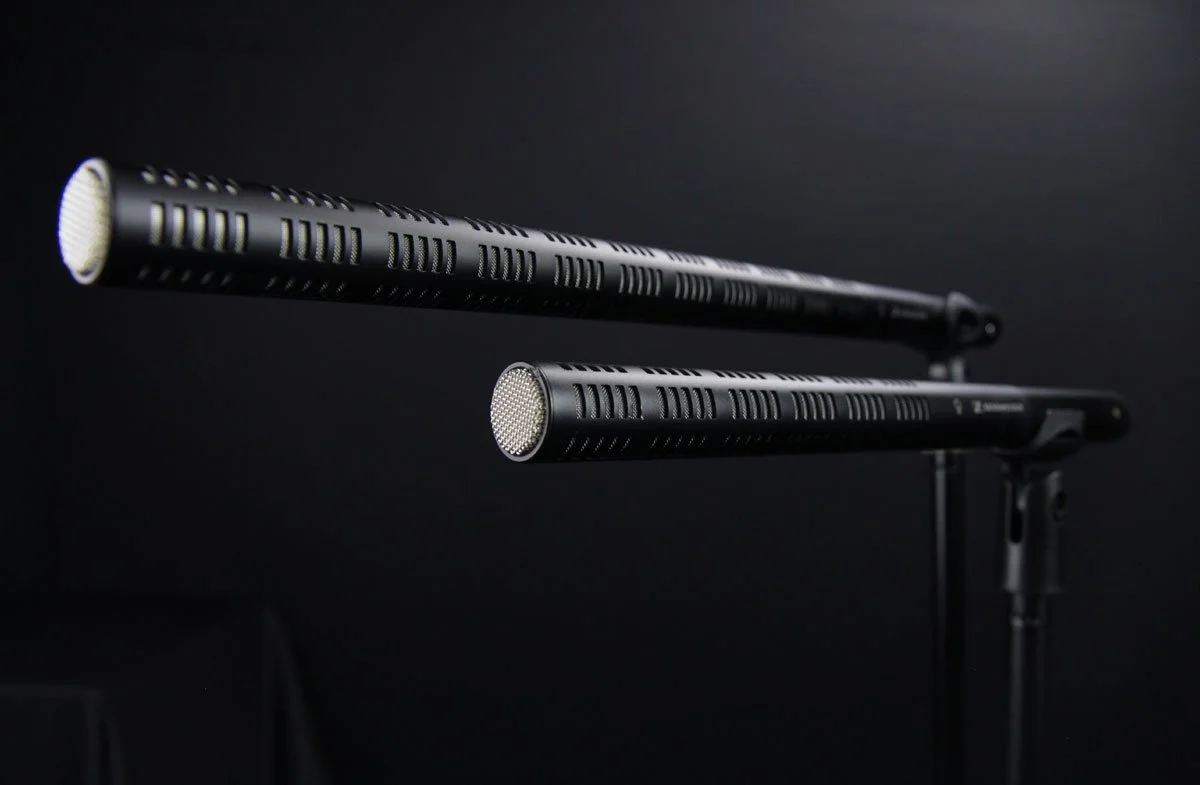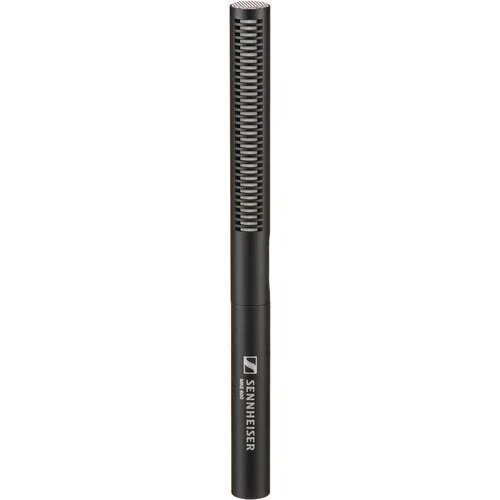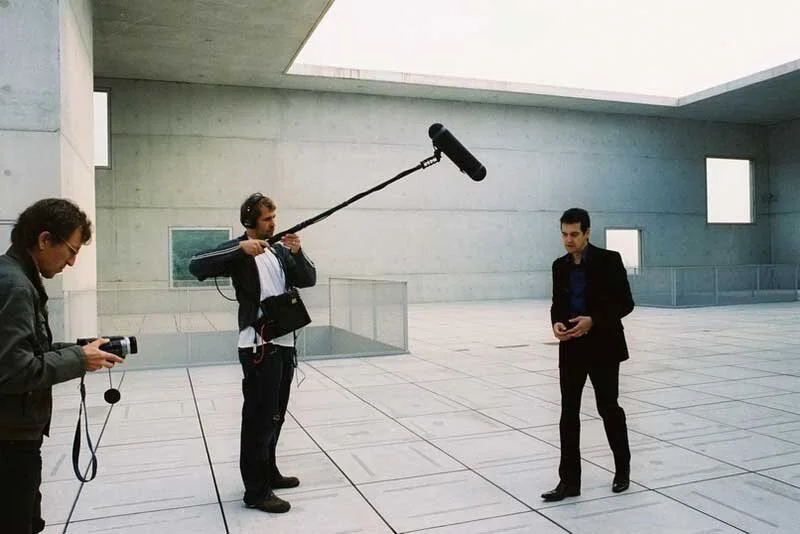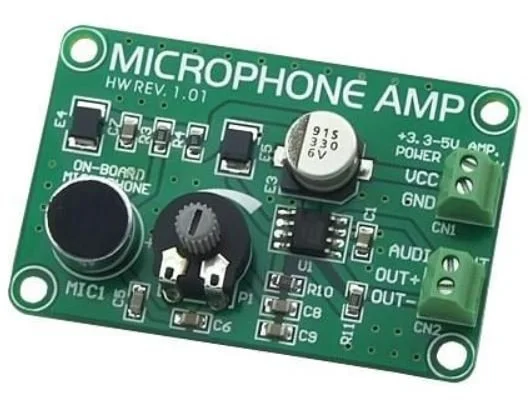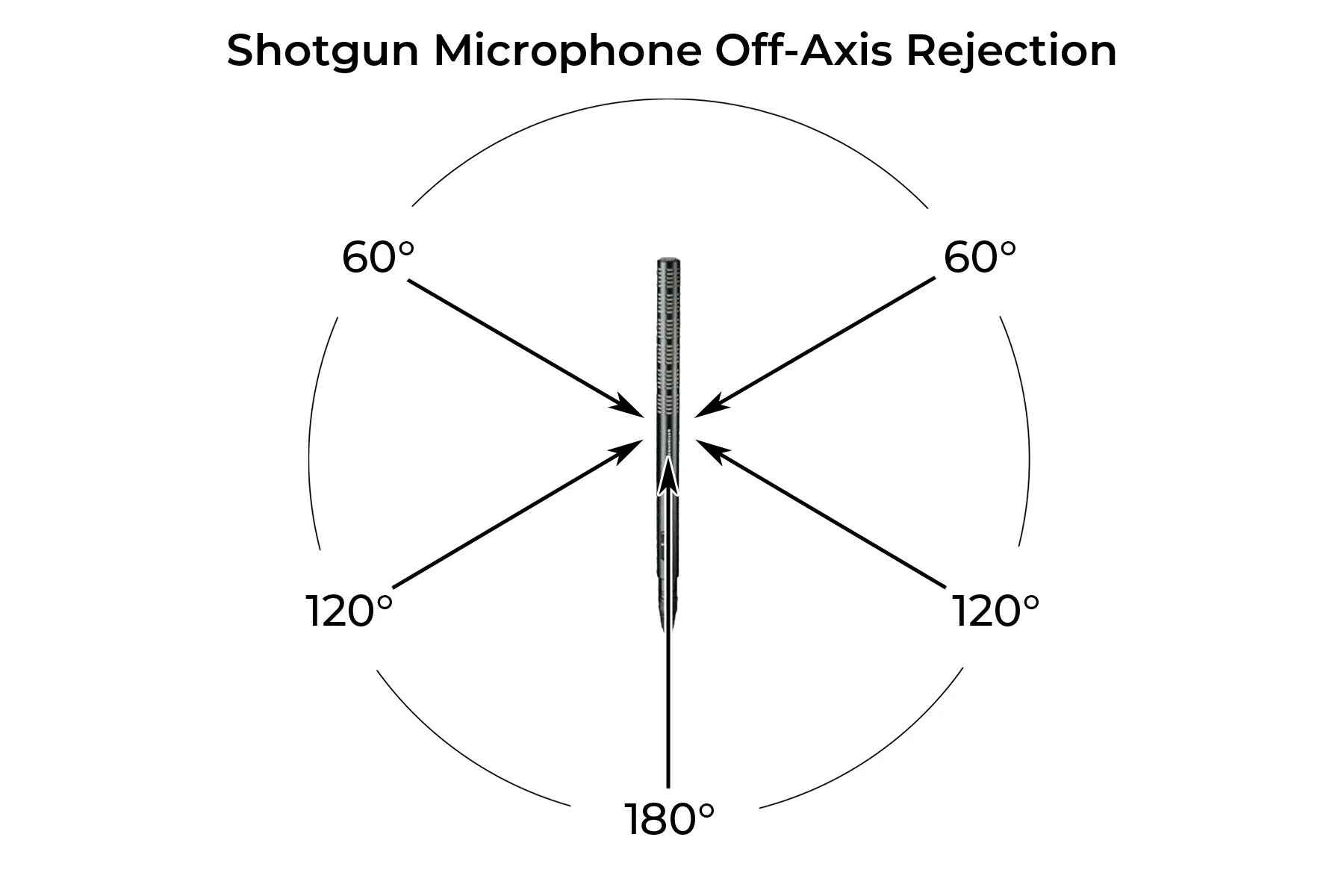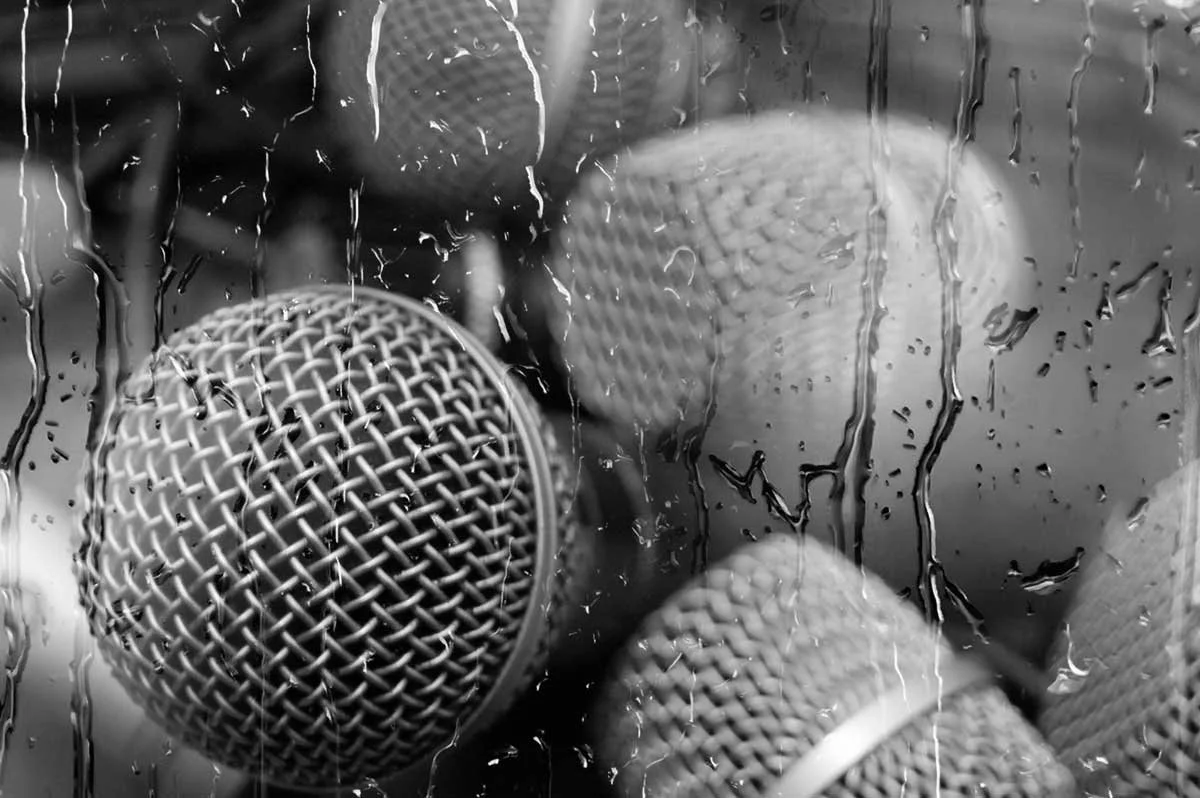Best Shotgun Mic for Field Recording in 2023
Compare every shotgun microphone on the market and learn how to choose the best one for your needs & budget!
This article is the ultimate buyer’s guide to shotgun microphones for field recording.
If you’re new to shotgun mics, I suggest you read this article from top to bottom. In doing so, you’ll learn about all the important specifications behind shotgun microphones that will help you make the best decision your your unique needs and budget.
If you’re in a hurry, or already well-versed on shotgun mic technicalities, please see the “Quick Links” section below.
Please leave a comment at the bottom of this post if you have any questions or just want to say hi!
Best Shotgun Mics for Field Recording (Quick Links)
Short Shotgun Mic Winners:
Best Value: Rode NTG5 Bundle
• Low Noise
• Moisture Resistant
• Many Accessories
Best Overall: Rycote HC-15
• Lower Noise
• Extremely Compact
• Compatible with Rycote Nano Blimp
Long Shotgun Mic Winners:
Best Value: Rode NTG8
• Ultra Low Noise
• Moisture Resistant
• Good Off-Axis Rejection
Best Overall: Sennheiser MKH 8070
• Ultra Low Noise
• Moisture Resistant
• Superior Off-Axis Rejection
What is a Shotgun Microphone?
The Sennheiser MKE 600 shotgun microphone.
A shotgun mic is a highly directional microphone that records a concentrated “beam” of audio from only the direction it is facing.
Recording sound from only one direction is extremely helpful when there are undesirable or distracting noises present in the surrounding environment.
The microphone capsule itself is unidirectional (usually cardioid, supercardioid or hypercardioid) and is located at the bottom of a long tube. The tube gives the mic its name due to its resemblance to a shotgun barrel.
Without the tube, a shotgun microphone would perform like a normal cardioid microphone, with a heart-shaped pickup pattern (pictured below).
To learn how the tube of a shotgun mic changes the pickup pattern, please read the next section. “How Does a Shotgun Mic Work”.
How Does A Shotgun Mic Work?
Shotgun microphone slotted barrel.
The key behind a shotgun microphone’s directionality is the tube. The microphone capsule sits at the bottom of a long, hollow tube with slotted holes along the sides.
Sound in front of the tube will travel unimpeded down the tube and into the capsule. This direct path maximizes the gain of your desired subject.
However, sounds to the side of the barrel must travel through the slots before reaching the capsule. The same sound enters through multiple slots, which creates phase differences inside the tube. When these different phases meet each other, they cancel out.
This phase-canceling works especially well for frequencies above 2kHz, and is increasingly less effective for frequencies below 2kHz.
This design allows shotgun microphones to reject, or greatly reduce the volume of sounds to the sides and rear of the microphone’s facing direction.
This engineering feat is how shotgun microphones highlight the sound of the intended subject and isolates them from the background noise.
What Is A Shotgun Mic Best Used For?
Shotgun microphones are best used for capturing and isolating the sounds of a subject at short distances. They are most commonly used for recording dialog on television and film sets on a boom pole held above the talent.
They are also used for recording dialog in YouTube studios, the sounds of wildlife species in nature, and spot sound effects.
In any case, shotgun microphones perform best at short distances between microphone and sound source.
Common Shotgun Mic Uses:
dialog for film/video/YouTube
speeches
wildlife species
spot effects
Specs to Know Before You Buy
If you’re in the market for your first shotgun microphone, it’s important to know the following specifications before you buy so you can make the best purchasing decision for your unique needs:
Self-Noise
Self noise is the signal the microphone produces even when no sound source is present. This noise is produced by current running through the circuitry and sounds like white noise. All microphones produce some noise but the amount varies greatly.
The level of acceptable self noise will vary based on your application. Recording loud sounds and at short distances between microphone and subject will stretch the acceptable range of microphone self noise.
Under these circumstances, your gain will be set relatively low to avoid peaking, and your subject will easily overpower the microphone’s self noise.
However, quieter sounds and recording at a distance requires more gain, which also increases the self noise level of your microphone. Noise-free recordings under these circumstances demand very low microphone self noise levels.
For easy comparison between shotgun mics, here’s my ratings for various self-noise ranges:
Self Noise Levels:
Poor: 24 dB-A and above. At this level, self noise is obvious and obtrusive in any recording situation short of recording jet engines at takeoff. Well, maybe that’s a slight exaggeration. Recording any sound below 70 decibels (vacuum cleaner) will have audible self noise hissing.
Fair: 20-23 dB-A. Self noise is still clearly audible at this level when recording anything below speaking volume (60dB).
Good: 16-19 dB-A. Great for most dialog and booming applications. Some noise may be heard when recording whispers, quiet ambiances and other sounds below 40dB.
Very Good: 11-15 dB-A. Recordists may be able to discern some slight self noise under critical conditions. Conditions include whispers, soundbeds, and other sounds below 30dB (there’s not many).
Excellent: 10 dB-A and below. Extreme low noise. Unnoticeable in all but the most critical recording conditions as even the quietest recording room still has more than 20dB of ambient noise.
Off-Axis Rejection
Off-axis rejection is an important shotgun mic specification. It measures the microphone’s effectiveness at reducing unwanted, off-axis sounds.
For this specification, the manufacturer measures the reduction (in dB) 60°, 120° and 180° from the microphone capsule. See the below image to get an idea of where these angles are in relation to the microphone.
How much reduction is good? For this article, I compiled off-axis rejection data for 30 different shotgun microphones. I added up the rejection for each of the three angles to get the total rejection figure. I then grouped the mics into three tiers of rejection based on their total rejection.
Good: 30-39 dB. Best used in environments with few distractions in the ambient environment.
booming
home video
recording studio
Very Good: 40-49 dB. Best for recording in environments with some unwanted sounds.
interviews
live reporting
noisy ambient environments
Excellent: 50+ dB. Best for eliminating distractions in loud or chaotic environments.
bird calls
crowded areas
Sensitivity
To put it simply, microphone sensitivity measures the amount of output for a given input. The input is the sound you are recording and the output is the actual recording.
The output of a microphone is referred to as “the signal.”
The more sensitive a microphone is, the louder the signal will be for a given input of sound. A loud signal is ideal for low noise recordings because a lower gain can be used, keeping the noise floor low.
The best microphone sensitivity will depend on the recording application. Sometimes a lower sensitivity microphone is better, and other times, a higher sensitivity microphone is better.
Low sensitivity mics are generally better for recording isolated, loud sounds.
High sensitivity mics are generally better for recording ambient, quiet sounds.
Low sensitivity mics are good for:
close miking (lavalier, drums)
vocals in a loud environment (live music venue)
guitar and bass amps
high SPL sounds (gunshots, vehicles, etc)
High sensitivity mics are good for:
ambiences
nature sounds
parabolic microphones
voice-over work
Microphone Sensitivity Levels:
Low sensitivity: -60 dBV→-50 dBV. Best for drums, instruments, vocals (singing) and other loud signals
Medium sensitivity: -50 dBV→-40 dBV. Best for hand-held microphones, voice-over work and loud ambient environments.
High sensitivity: -40 dBV→-30 dBV. Best for boom miking, natural sounds and most ambient environments
Extremely high sensitivity: -30 dBV and below. Best for distant miking, very quiet sounds and ambient environments.
Length
The length of your shotgun microphone will determine how portable it is, how narrow the pickup pattern is, and how effective it is at canceling-out lower frequency sounds.
Depending on your application, overall microphone length can be critical. For example, if you need a shotgun microphone to sit on top of your camera via hot shoe connection, the microphone must not enter the frame.
Additionally, travel restrictions and user preference may also determine the maximum size.
Short (<280mm): Less directional than its longer counterparts, short shotgun mics are useful when length must be minimized. They have a wider “sweet-spot” and are forgiving towards slightly-off placement.
Medium (300-400mm): Medium length shotgun mics work well in most situations offering a good balance of rejection, ease-of-use and form factor.
Long (>400mm): A long shotgun mic will have the greatest off-axis rejection. However, it is more difficult to aim and to work with because of its length. Long shotguns require precise positioning requiring either a fixed mic or skilled boom operator to keep the subject in the narrow “sweet-spot.” Long shotgun mics are the best option for recording distant sounds or loud environments.
Moisture Resistance
If you are planning on recording outdoors with your shotgun microphone, make sure you select a model resistant to moisture.
Outdoor environments are not ideal for electronics. Humidity, dust, dirt and extreme temperatures create this harsh environment. Humidity is the main problem and is notorious for killing equipment.
To solve this issue, internal wiring and circuit boards are coated with a film, called a “conformal coating,” that protects against moisture, dust and extreme hot and cold temperatures.
For each shotgun microphone recommendation, I have included whether it is moisture resistant or not in the “specifications” section.
Diameter
Diameter is an important factor to consider when selecting a mic clip, shock mount or wind protection for your shotgun microphone.
These accessories are manufactured to accept microphones of specific diameters so make sure your microphone will fit before purchasing!
Most shotgun microphones fall between 19-25mm in diameter and will fit most accessories on the market.
Shotgun Mic Comparison Chart
| Manufacturer | Model | Price* | Self-noise (dBA) | Moisture Resistant(dB) | Total Rejection* (average dB) | Sensitivity (dBV/Pa) | Diameter (mm) | Length (mm) |
|---|---|---|---|---|---|---|---|---|
| Rode | NTG8 | $999 | 8 | Yes | 20 | -20 | 19 | 559 |
| Rode | NTG5 | $499 | 10 | Yes | 48 | -23.5 | 19 | 203 |
| Sennheiser | MKH 8060 | $1249 | 11 | Yes | 38 | -24 | 19 | 178 |
| Audio Technica | BP4073 | $699 | 13 | No | 35 | -29 | 21 | 233 |
| Sennheiser | MKH 416 | $999 | 13 | Yes | 38 | -32 | 19 | 250 |
| Schoeps | CMIT 5 | $2369 | 13 | No | 40 | -35 | 21 | 251 |
| Rode | NTG3 | $699 | 13 | Yes | 43 | -30 | 19 | 255 |
| Schoeps | Mini CMIT | $2225 | 14 | No | 35 | -35 | 21 | 151 |
| Sennheiser | MKE 600 | $329 | 15 | No | 30 | -34 | 20 | 256 |
|
Shure |
VP89M | $899 | 15 | No | 39 | -33.5 | 22.35 | 341 |
| Shure | VP82 | $299 | 15 | N | 40 | -36 | 22 | 195 |
| Shure | VP89S | $699 | 15 | No | 44 | -33.5 | 22.35 | 237 |
| Sanken | CS-1e | $850 | 15 | Yes | 45 | -24 | 19 | 181.5 |
| Shure | VP89L | $999 | 15 | No | 49 | -33.5 | 22.35 | 488 |
| Sanken | CS-3e | $1450 | 15 | Yes | 67 | -28 | 19 | 270 |
| Rode | NTG4 | $29 | 16 | No | 47 | -36 | 22 | 225 |
| Rode | NTG4+ | $269 | 16 | No | 47 | -32 | 22 | 278 |
| Sony | ECM-673 | $250 | 17 | No | 35 | -36 | 20 | 200 |
| Sony | ECM-674 | $299 | 17 | No | 35 | -36 | 20 | 268 |
| Audio Technica | AT897 | $250 | 17 | No | 45 | -40 | 21 | 279 |
| Sony | ECM-VG1 | $299 | 18 | No | 38 | -33 | 20 | 210 |
| Rode | NTG1 | $250 | 18 | No | 42 | -36 | 22 | 219 |
| Rode | NTG2 | $269 | 18 | No | 42 | -36 | 22 | 280 |
| Audio Technica | 8035 | $269 | 22 | No | 50 | -38 | 21 | 369 |
| Rycote | HC-15 | $779 | 8.5 | No | N/A | -27 | 19 | 155 |
| Rycote | HC-22 | $799 | 8.5 | No | N/A | -26 | 19 | 221 |
| Sennheiser | MKH 8070 | $1599 | 8 | Yes | 38 | -19 | 19 | 465 |
*Price from B&H website
*Rejection was determined by calculating the average off-axis rejection at 60°, 120° and 180°
Best Shotgun Mics for Field Recording
After comparing all 27 shotgun microphones in the comparison table, below you’ll find the winners for two categories:
Short Shotgun Mics - less than 200mm in length, lightweight, compact, less off-axis rejection.
Long Shotgun Mics - greater than 300mm in length, heavier, bulky, superior off-axis rejection.
Short Shotgun Mic Recommendations
Best Value: Rode NTG5
The NTG5 shotgun microphone from Rode is one of the best overall shotguns because of its pro-level specifications, accessories, and affordable price.
Released in December, 2019, the NTG5 is the replacement for the extremely popular NTG3 with a catch…the NTG5 has better specifications, more accessories, a lower price, and is moisture resistant.
In comparison, the NTG5 is quieter, more sensitive, shorter, lighter, and has better off-axis rejection than the NTG3.
Additionally, the NTG5 comes with some awesome accessories not included with the NTG3. Included is a dual lyre, Rycote shockmount, Rode PG2-R pistol grip with Pro Cable attachment for optimal XLR cable management, RM5 stand mount, foam windscreen and Rode WS10 furry windscreen!
These accessories provide everything you need to start recording high-quality audio right out of the box.
Weighing just 76g, the NTG5 is a boom operator’s dream for long days on set. Rode was able to achieve this weight by its shorter length and by machining the microphone from a solid piece of aluminum. This also adds durability to the microphone. Its seamless design eliminates weak spots along the body.
Specifications:
Self-noise: 10 dB-A (excellent)
Total Rejection: 48 dB (very good)
Sensitivity: -23.5 dBV (extremely high)
Diameter: 19 mm
Length: 203 mm (short)
Weight: 76 g
Moisture Resistant: Yes
Switches: None
Best Overall: Rycote HC-15
Released in 2022, the HC-15 is the first microphone ever released by Rycote.
Known for their professional wind protection solutions, Rycote didn’t disappoint with this first.
With only 8.5dB of self-noise, the HC-15 is the quietest short shotgun microphone available.
Adding to the list of benefits is its compatibility with the new Rycote Nano Windshield. The Nano Windshield is smaller, lighter, and more acoustically transparent than Rycote’s standard Modular Windshields and fits the HC-15 perfectly.
If the HC-15 was moisture resistant, it would be the perfect short shotgun microphone.
Specifications:
Self-noise: 8.5 dB-A (excellent)
Total Rejection: N/A
Sensitivity: -27 dBV (extremely high)
Diameter: 19 mm
Length: 155 mm (short)
Weight: 90 g
Moisture Resistant: No
Switches: None
Long Shotgun Mic Recommendations
Best Value: Rode NTG8
The Rode NTG8 is not only a great value, it’s the longest shotgun microphone on the market at a whopping 559mm.
With only 8dB of self-noise, 20dB average rejection, and moisture resistance, the Rode NTG8 is a great option for recording dialog at large distances between mic and talent. Ideal for long and wide shots.
Specifications:
Self-noise: 8 dB-A (excellent)
Total Rejection: 20 dB
Sensitivity: -20 dBV (extremely high)
Diameter: 19 mm
Length: 559 mm (short)
Weight: 345 g
Moisture Resistant: Yes
Switches: None
Best Overall: Sennheiser MKH 8070
The Sennheiser MKH 8070 is the premier option when it comes to long shotgun mics.
With just 8dB of self-noise, 38dB average rejection, and moisture resistance, it’s a nice piece of kit (and expensive).
Slightly more sensitive than the Rode NTG8 with significantly better off-axis rejection, the MKH 8070 is the best option for professionals who struggle to keep their booms out of frame while still capturing crisp dialog.
Specifications:
Self-noise: 8 dB-A (excellent)
Total Rejection: 38 dB
Sensitivity: -19 dBV (extremely high)
Diameter: 19 mm
Length: 465 mm (short)
Weight: 332 g
Moisture Resistant: Yes
Switches: None
Support Acoustic Nature
If you enjoyed this post and would like to help support Acoustic Nature, please consider "buying me a coffee" or becoming a Patreon with the buttons below.
As a thank you for your support, Patreon supporters receive a copy of Field Recording For Beginners, exclusive access to the full Behind The Sounds video series, nature sound library downloads, and more.
If you are unable to support the site financially, please share this post with others, or leave a comment below letting me know you enjoyed this post! Both are free and help the website grow. Thank you ♫
Thanks for reading,
-Jared

